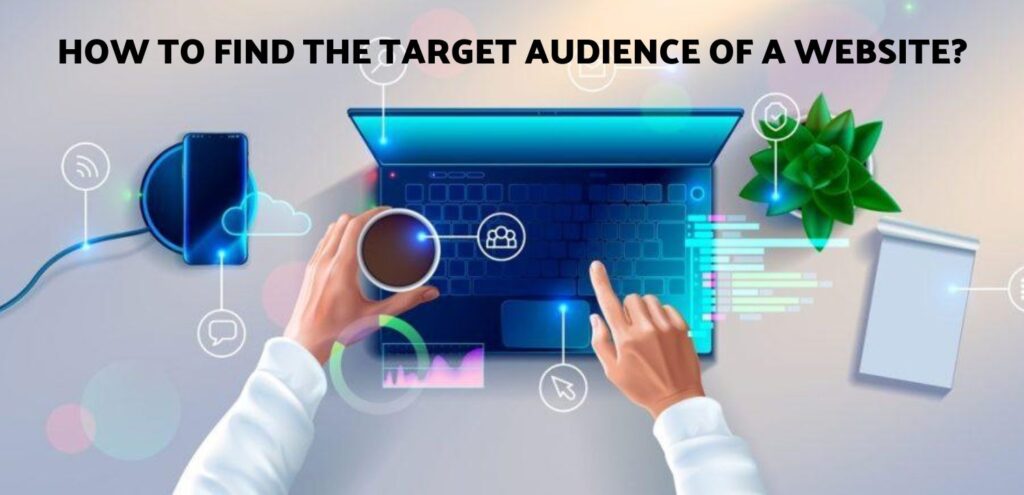In today’s digital scenario, it is important to understand the target audience on your website. Identifying the right audience helps you create relevant materials, improves user engagement and conversion. Whether you run an E-commerce store, a service-based business or a blog, and know who the visitors are, will enable you to tailor your marketing strategies effectively.

What is a Target Audience?
Your target groups are most likely to connect to your website, content or products. They share common characteristics such as demographics, interests, requirements and behavior. By identifying your target groups, you can optimize your digital marketing effort to attract the right users.
Why is Identifying Your Target Audience Important?
- Better marketing return -Focused marketing efforts achieve better results and cost efficiency.
- High commitment rate – The content corresponds to the right audience increases interaction and conversion.
- Better customer experience – Understanding the User Web, improves Purpose and Satisfaction.
- More effective SEO strategy – Targeting the right audience improves searching and organic traffic.
Now that we understand the importance, you can find out step -by -step strategies to identify the target group on our website.
#Step 1: Analyze your existing website traffic
By using analysis tools like Google Analytics, you can get information about who is currently going to your site. The most important data points include:
- Demographic (age, gender, place)
- Interests and behaviors (browsing habits, unit using)
- Traffic source (organic, social, payment, direct)
- Popular ingredients (which are most engagement on pages)
By analyzing this data you can determine the pattern and refine the audience.
#Step 2: Conduct Market Research
Market surveys help you understand the industry, competitors and potential customers. The methods include:
- Competitive analysis – Study of the public to the participants, their engagement strategies and content methods.
- Industry trends – Use devices such as Google Trend, Semarsh or Ahrefs to analyze search behavior.
- Customer survey and answers – Gather direct insights from users about your priorities and challenges.
#Step 3: Develop Buyer Personas
Creating a buyer provides a detailed representation of your ideal customers. include:
- Name and background – Imaginary, but realistic people help imagine the audience.
- Demographic – Age, gender, income level, education and work.
- Goal and pain points – Understanding the user’s needs to help with tailor -made solutions.
- Online behavior – How they find information and talk online.
For example, if you run a fitness blog, your primary persona could be:
John, 30, fitness enthusiast, looking for home workout routines due to a busy work schedule.
#Step 4: Monitor Social Media Insights
Social media platforms such as Facebook, Instagram and LinkedIn provide the audience’s insight. Matrix is included to investigate:

- Followers demographics
- Engagement rate
- Top performing positions
- Interests and behaviors
Tools such as Facebook audience insights and Twitter analysis help to target the audience.
#Step 5: Utilize Keyword Research for Audience Interests
Keyword research helps to decide which subjects and questions the audience is looking for. As the use of equipment:
- Google keyword planner
- Ahrefs keyword explorer
- Semarsha Keywords Magical Tools
Find relevant keywords with high search volume and low competition. Customize the material using these keywords to attract the right visitors.
#Step 6: Track User Behavior on Your Website
Heatmaps and Sessions Recording Tools as Hotjar and Crazy Egg users provide insight into behavior. Analysis:
- Where users click most
- What classes do they flip
- Where they go
This data helps to refine the site’s design and content strategy for better engagement.
#Step 7: Identify Audience Segments
The intention of all visitors is not the same. Segment your audience based on:
- First-time vs. returning visitors
- Geographical location
- Unit use (Mobile VS Desktop)
- Purchase behavior
Adapt marketing strategies for different segments enhance the user experience and conversion frequencies.
#Step 8: A/B Testing for Target Audience Validation
The A/B test allows you to compare different versions of materials, CTAs and website setup. Experiment with:
- Heading and copies – Test different tons and messages.
- CTA button – Analyze the conversion frequencies for different locations and words.
- Landing page – identify which side structure is doing better.
Tools that Google optimizes and effectively helps effective A/B testing.
#Step 9: Leverage Customer Relationship Management (CRM) Data
CRM stores valuable customer data, including previous interactions, purchases and preferences. Use this data:
- Customize Email campaigns
- Make advertising strategies that retire
- Provide recommendations based on previous behavior
#Step 10: Stay Updated & Adapt

Viewers’ preferences and behavior develop over time. Update the research to the audience regularly:
- Periodic examination
- Launch
- Analysis of new data from website analysis
How Labhanya Technologies Can Help?
In Labhanya Technologies, we are experts who help companies recognize and link our target groups through data -driven digital marketing strategies. Our services include:
- SEO Optimization – Ensuring your website reaches the right audience.
- Content Marketing – Creating content tailored to audience interests.
- Social Media Strategy – Targeting the right demographics for maximum engagement.
- Analytics & Reporting – Providing insights for continuous improvement.
If you’re ready to refine your audience targeting and boost your online presence, contact Labhanya Technologies today! Call +91 8368521254 (India) and +1 719 999 0082 for international certification.
